
by admin | Nov 28, 2020 | E-Learning Testing, Fixed, Blog |
When it comes to training executives, e-learning can be a challenging task at hand. Organizations are often compelled to look beyond end-to-end e-learning because the current working environment demonstrates several challenges. End-to-end e-learning is a very incumbent and lengthy process and entails a prolonged development time, which usually ranges from two to four months.
Training managers are often forced to look for convenient alternatives. In this blog, we will further understand the challenges and limitations of end-to-end e-learning and the reasons why managers are often not able to meet them. However, if you do plan to introduce an end-to-end e-learning model in your organization, undertake an ELearning testing or employ ELearning Testing Services to assess the viability of your module.
We will begin this informational journey by explaining to you the process of end-to-end e-learning.
The Process
End-to-end e-learning involves formulating a storyboard that defines on-screen content for each user, including texts, media, graphics, and illustrations. The storyboard is further backed by an audio script that explains the entire training process step-by-step. This whole module is developed by an instructional designer who is further assisted by a graphic designer to create visual assets. Authoring experts then develop the course, following the storyboard as the blueprint. Therefore, the development of the module requires a series of experts who will have to play their part proficiently.
Projects suited for end-to-end e-learning are the ones that are sourced with extensive budgets and indefinite deadlines. Moreover, assignments that might require end-to-end e-learning include intensive interactivities and simulations such as industrial control systems, flight simulators, or the jobs involving induction training.
Limitations and Challenges
Any reader could have grasped that end-to-end e-learning is suitable for organizations that can spare extensive budgets and provide indefinite or at least protracted deadlines. The elaborate storyboarding of content and numerous specifications, interactions, and iterations make it a complicated process and is often not fitting for an enterprise that has just rolled out for business. The audio script for an end-to-end e-learning module usually involves conversations between the client and the developer, the process of transcribing for which consumes massive time.
Arguments and Oppositions
1. Conversion of ILT to Classroom Training Module
If an organization faces the immediate need to convert an ILT program into classroom training, the end-to-end process is not viable since its development will consume enormous time. Besides, for establishing a comprehensive classroom training module, information or raw material will be readily available in PowerPoint slides, so there is absolutely no need to go through an elaborate process and create something convoluted when a more comfortable, more convenient option is available.
In such a conversion, the following e-learning activities are accomplished even before the development process starts:
- Analyzing the target audience and laying a foundation accordingly
- Content research and curation for providing comprehensive and valuable information
- Finalization of learning outcomes and strategies
- Organization and designing of learning content and activities
- Development of assessment mechanisms
Once these steps are completed, there will virtually be no need to go through an entire development process. Courses can be developed at a faster pace while employing lower costs.
2. Costly Development
When you need to develop courses on a strict budget, end-to-end e-learning is not for you since it entails higher formulation costs. The involvement of several resources and the utilization of complex simulations and interactivities only add to the budget, thereby increasing the outlay.
3. Courses in Different Languages
Creating a course in multiple languages has become a necessity now. Due to globalization, various individuals belonging to different nationalities avail online courses. End-to-end e-learning can be used for translation and localization of courses. If you want to formulate a multilingual course, you will need to expend more resources and devote extra time and energy.
4. Updating Courses
When you want to update or modify a course in line with the recent developments or alterations, the higher cost of operating an e-learning module will make you think twice before you employ the method. Your upgrade requirements can range from software updates for industrial training software or changes in rules during compliance training. Therefore, for courses that reflect dynamic behavior, end-to-end e-learning might not be a viable technique.
5. Re-branding Existing Courses
Since companies undergo constant changes due to internal and external factors, their branding guidelines often endure modifications. Therefore, service enterprises that deal with constantly altering products must think twice before employing end-to-end e-learning to develop their course requirements. Experts recommend that companies like these should look for an alternative that is cost-efficient and involves minimal time. Consequently, if you think that your enterprise modules require consistent re-branding, then looking for an option that will not cost you massively is the only prudent solution.
To wrap it up
End-to-end e-learning can pose problems for organizations that are looking for budget course modules in a specific timeframe. If your enterprise involves dynamic training requirements, you must look beyond end-to-end e-learning and settle on something financially and spatially feasible. You can consider rapid e-learning for formulating comprehensive class training courses. The method involves quirky ways through which you can efficiently train your employees. You don’t require end-to-end e-learning for creating courses exclusively. As discussed above, it is only suitable for organizations that can afford to spend large outlays and provide an indefinite timeframe for formulation.
However, regardless of the method you choose, you must undertake a prudent ELearning App testing if you plan to roll out your module on mobile devices. Software testing is crucial since you certainly do not want problems once the application or course has been launched. End-to-end e-learning can pose its challenges and limitations to training managers. Still, there are alternatives available in the market that you can help you get through the process in time while considering your budgetary threshold. You can consider all reasons why end-to-end e-learning fails but always remember that there is one right option always available that will suit your business just right.
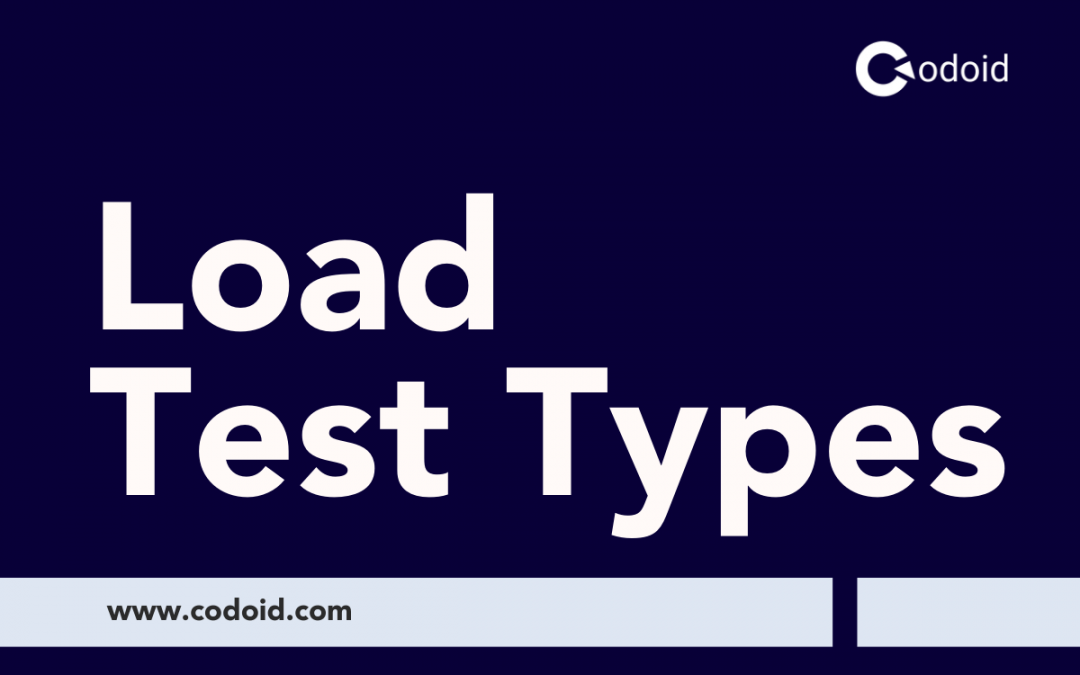
by admin | Nov 26, 2020 | Performance Testing, Fixed, Blog |
Load Testing is one of the types of performance testing. The typical load testing process is Test Design, Test Execution, Analysis the report, Fix the performance bottlenecks, and Re-run the scripts. To identify responsiveness and stability issues, you need to use different kinds of loads.
In every load testing, two parameters are involved – no. of virtual users and Test Duration. So the goal is you need to load the targeted no. of users within the stipulated time.
In this blog article, you will learn how to ramp-up users using different load test strategies.
Basic Load
In this type, you ramp-up all the users quickly and see how the application behaves with concurrent user load.
For example: Let’s say you have planned for 2000 users and two hours test duration. All the 2000 users will be ramped-up in 120 seconds, and the test will run for 2 hours with a 2000 concurrent user load.

Ramp-up and Ramp-down Load
In this load, you ramp-up and ramp-down gradually. Instead of loading all the users quickly, you will load slowly and see how resources are utilized.
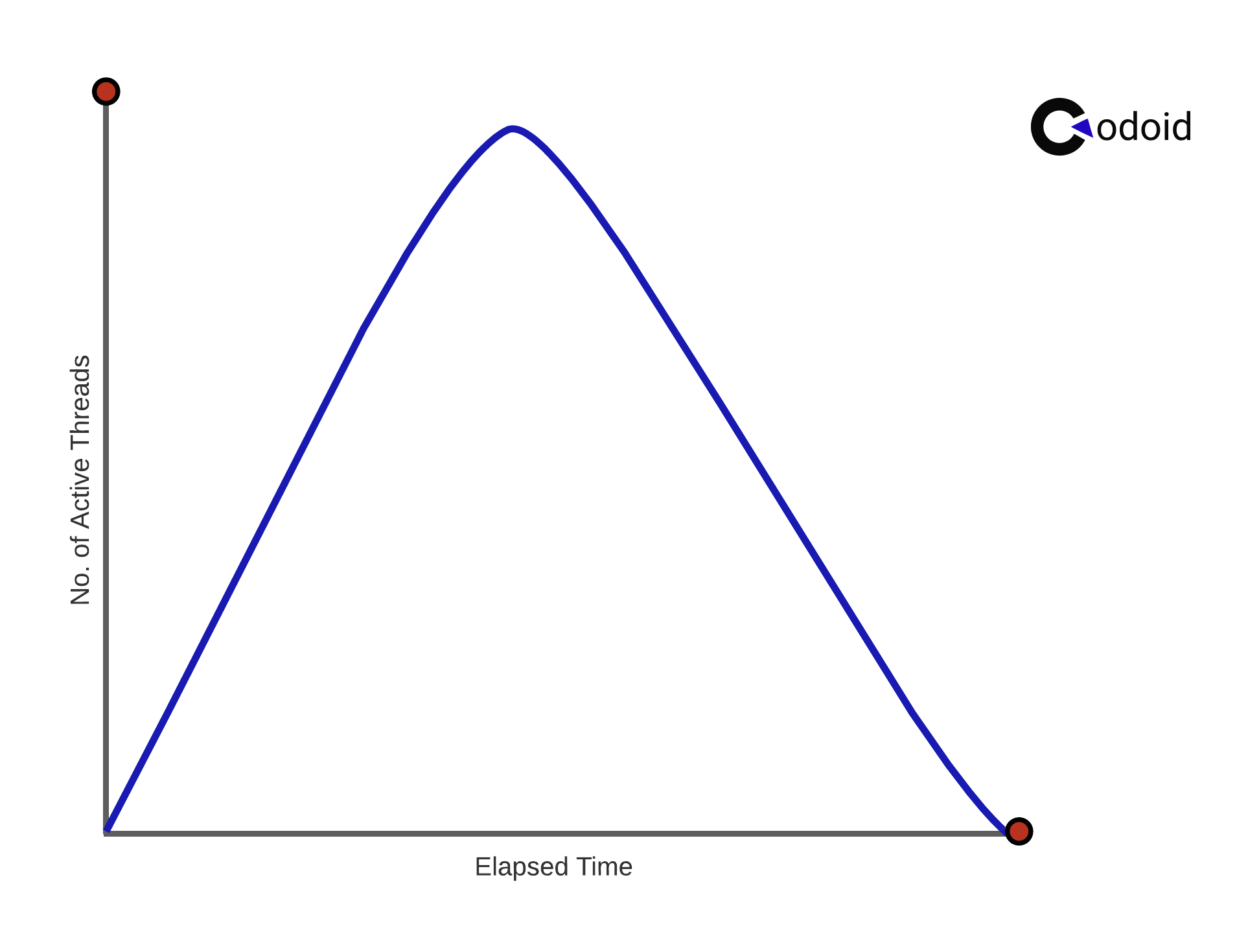
Multi-Step Load
The multi-step load is well suitable if the end-users are using/visiting the web application from different time-zones. A sudden increase in the load may not help you to identify the performance bottlenecks. Multi-step load adds a set of users in the given interval instead of loading all the users in one go.
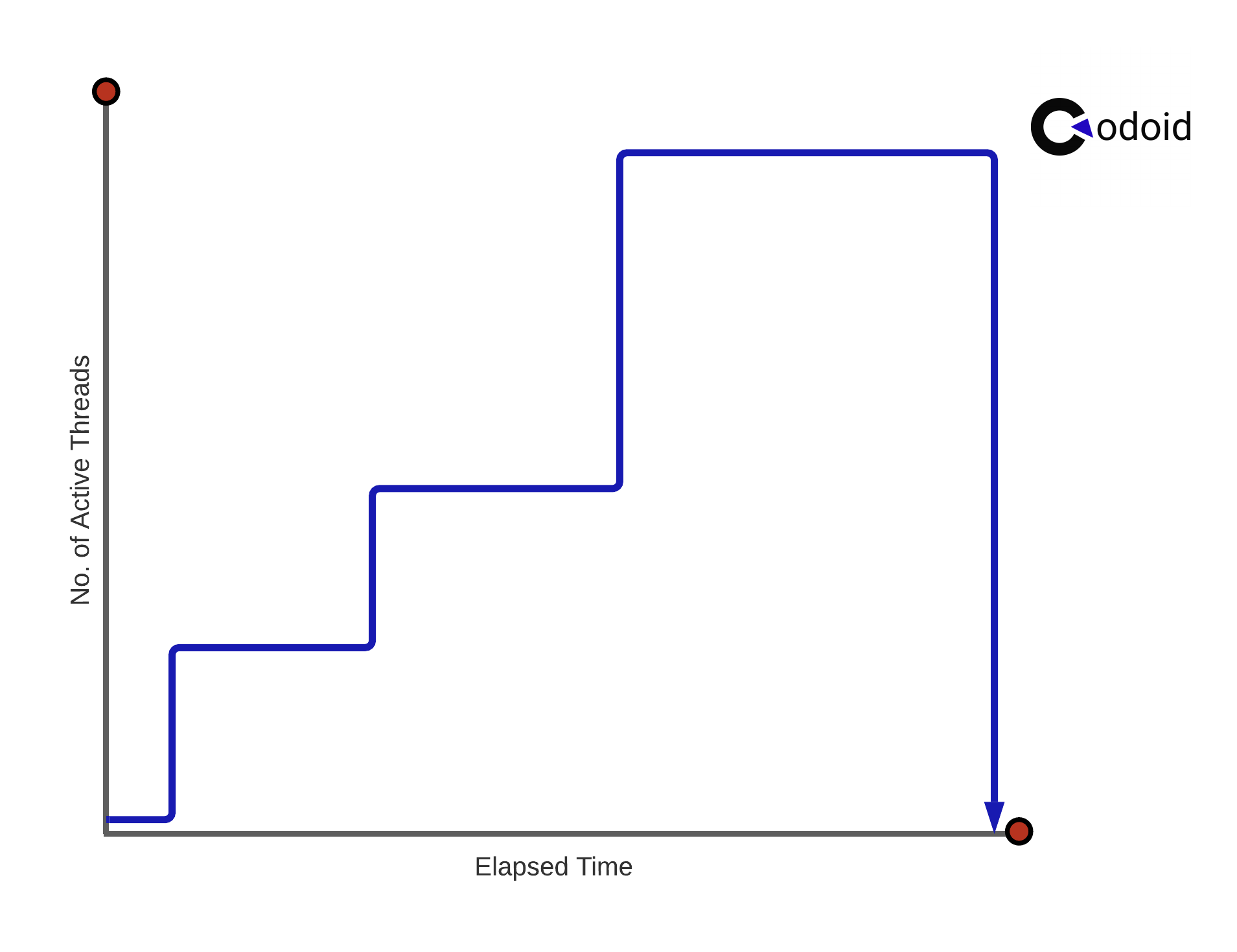
Random Load
Sometimes It is impossible to predict the user load. We will recommend adding a random load test. You can analyze how the application is reacting to the fluctuating load.
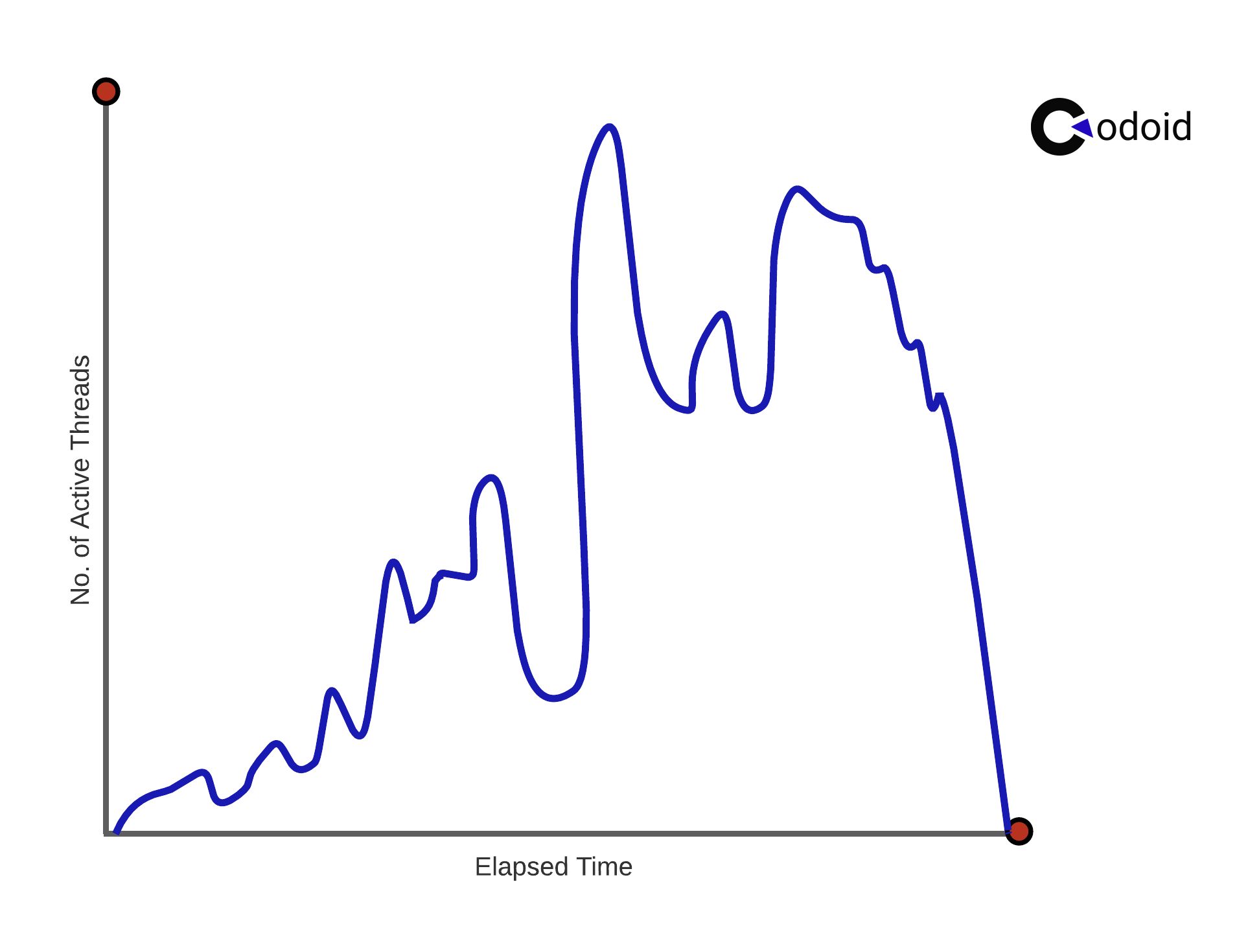
Exponential Load
In this test, you load a small set of users for a while and suddenly increase the load exponentially to test how the system scales when the load is super fast.
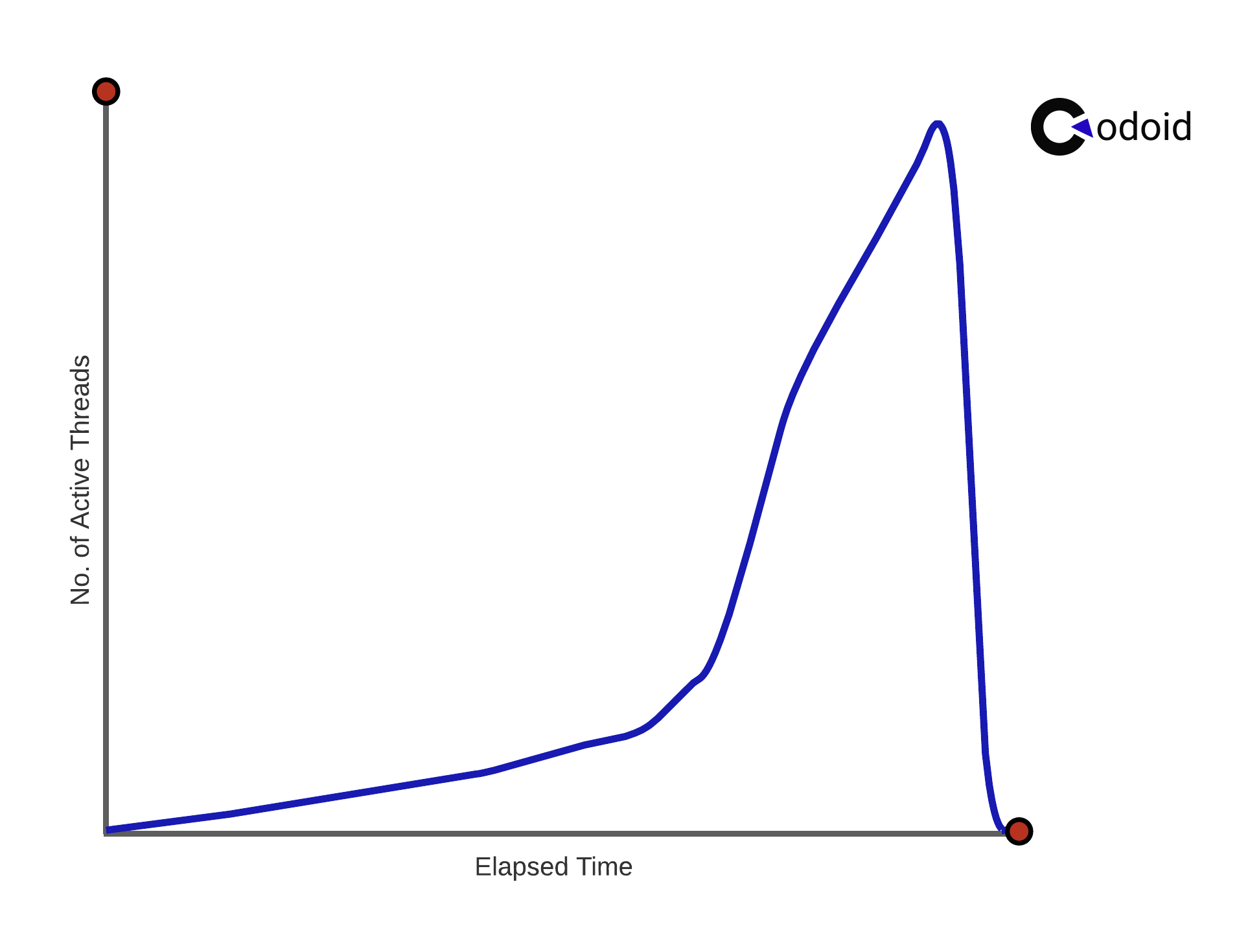
In Conclusion
Choosing the right load strategy will help you to identify the performance issues before releasing the system/app to the end-users. As one of the best QA companies, we create a concrete performance testing plan after gathering requirements from our clients.
Testing the responsiveness and stability of your application is vital to avoid unexpected issues. If your application is not responding, the user may never visit again. Performance testing is expensive. You need an expert team to accomplish the goals accurately. Contact us for your Load Testing needs.
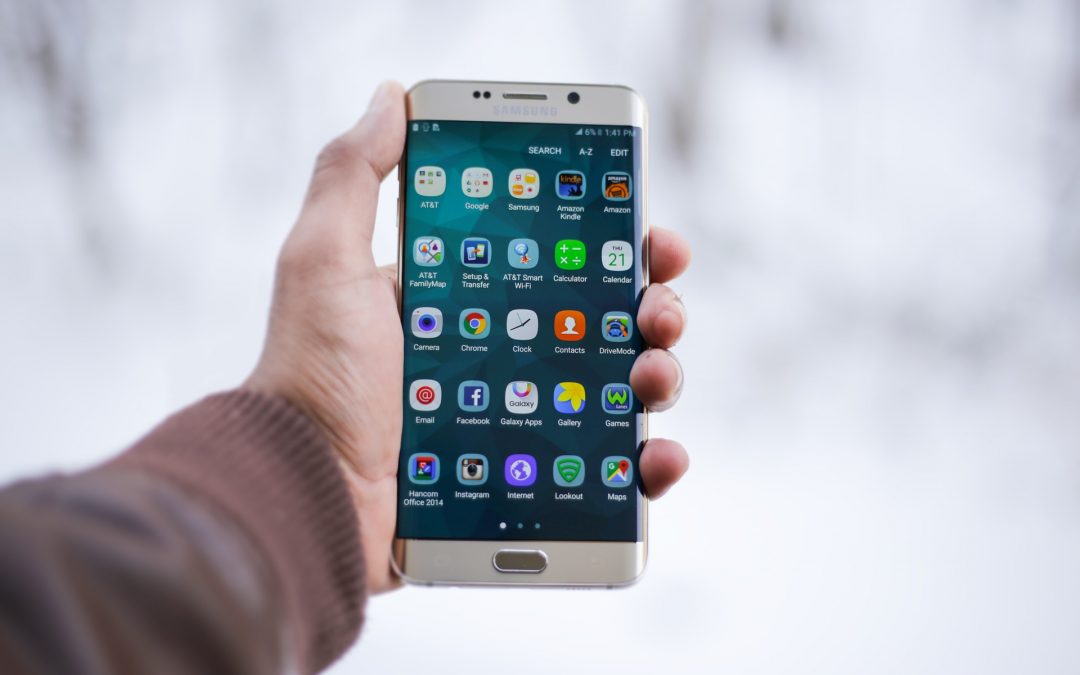
by admin | Nov 26, 2020 | Mobile App Testing, Fixed, Blog |
While we can all dream about creating software free from bugs from launch, there is no such thing, especially when it comes to mobile applications. This is because different mobile devices have different specifications, all of which can affect an application’s performance one way or the other. Even the mobile app developers themselves have their limitations, from the operating systems they use to the hardware they have access to. Pair that with new mobile devices coming out practically every year, ensuring applications are bug-free at release is unlikely.
How do you ensure that your mobile application comes out as flawless as you can make it without leaving any bugs that can hurt the user’s experience? The answer is with mobile app testing! Although releasing a perfect app on day one can be extremely tough, mobile app testing ensures that many bugs are caught and addressed before they cause too much trouble.
This article will talk about the objectives of mobile app testing and why you need to integrate them when developing mobile applications.
1. Functionality
One of the most critical aspects that mobile app testing covers are functionality. The application must be able to function as intended, and it must meet the requirements and expectations set for it. For instance, if an app is created to act as a stopwatch, it should do what a stopwatch does. It should not handle emails; it should not be playing music.
2. Usability
Usability is also essential, and it is the second objective of mobile app testing. This is to ensure that the end-users can use the application, and more importantly, enjoy it. Usability also includes the mobile device itself, where the application should not impact the device’s performance by straining it of its resources.
3. Consistency
Look and feel are important. Similar to how Apple products feel like they are from the same company on any device, your application should be the same no matter which mobile device it is on. From its aesthetics to its functions, a mobile application should feel consistent throughout. This is to maintain the same user experience on any device the application is used on.
4. Security
Last but not least, security is one of the objectives of mobile app testing. Through testing, you can ensure that the app has no security flaws and that a good level of security is upheld no matter the device the mobile application is used for. This is to protect end-users’ data and protect its owner’s reputation.
Conclusion
Functionality, usability, consistency, and security—these are the objectives of mobile app testing. If you are developing software and want to ensure it is as good as possible on its release, you must never skip on mobile app testing. Otherwise, you may just be digging yourself a hole of trouble that is hard to get out of.
If you do not have the time or resources to carry out mobile app testing by yourself, we highly recommend working with professional mobile application developers. They have plenty of experience in testing out mobile apps, ensuring that they fully satisfy all the mobile app testing objectives and allow you to enjoy a fully functional mobile app you can rely on.
Are you in need of the best app testing services in the US? Codoid has got your back, offering mobile app testing services to ensure your app is in its best form. Contact us today and see how we can help!

by admin | Nov 25, 2020 | Exploratory Testing, Fixed, Blog |
Reporting and documenting your exploratory testing can be a huge value add for your project. In scripted testing, you’re able to demonstrate with test results based on overall status and step-wise status. When talking about Exploratory testing however, there is a slightly different approach.
We’re all aware of the difference between Exploratory testing and scripted testing. Exploratory testing is more of a creative, free process in which you’re able to be flexible in your methodologies. This can actually work to the benefit of the product.
Let’s take a look at how to conduct Documentation and Reporting for Exploratory Testing.
Charters
Before Exploratory testing can begin, identifying the “What and Why” is crucial. What are you going to be testing, and why is it important? Exploratory testing allows for freedom while testing, but there should be a sharp focus on a particular area.
What we like to do at CODOID, is prepare a Charter before the Exploratory testing begins. This charter sets a focus and roadmap for your testing and ensures testers stay on track.
Notes
Keeping notes is vitally important to help members of your team understand how testing was conducted, and what you’re learned. Notes can then be used later for auditing.
Defect List
When discovering Defects, ensure they’re well documented on a dedicated list. To add some substance to the documentation, a full description of the Defect as well as screenshots or screencasts (i.e., steps to replicate Defect) ensure the proper context is provided. This allows your team to quickly and easily understand the issue.
Debriefing
A debriefing note is a fantastic way to explain to your team what you’ve done in that particular testing session. This allows your team to understand your approach, reflect, and receive inputs to improve the overall coverage and planning of the testing itself. Not all stakeholders in the project will have time to go through all of the artefacts. A debriefing note is a quick way to paint the overall picture for them.
Test Planning using MindMapping
It’s almost never a good idea to create a testing plan for Exploratory testing. However, planning shouldn’t be ignored entirely. You never know what will come out of Exploratory testing. Instead of creating a full test plan, begin planning when focusing on a particular feature or functionality. As a software testing company, CODOID creates test plans using MindMap tools. The diagram below demonstrates all of our focus areas when testing CODOID’s Contact Us page.

In Conclusion
We believe documentation is crucial in Exploratory testing. Not only does it help the tester, it helps their team and other stakeholders by quickly providing important information about the areas tested and defects found while limited superfluous information.

by admin | Nov 24, 2020 | Agile Testing, Fixed, Blog |
For a small team, a spreadsheet is sufficient to track bugs. However, for a geographically dispersed team and an organization which has multiple groups, it is not the right choice. A bug tracking system will allow you to capture several essential information about a bug, and your team will be notified when you log a defect.
Bug Prioritization
An Agile team can decide how quickly a bug needs to be fixed based on its severity. Bug severity can be determined with the following questions:
- How many will it affect?
- How much money will the company lose if released into production?
- How costly is the time to fix the issue going to be?
An agile tester should discuss with stakeholders to decide the bug priority based on the above questions’ answers.
Reference:https://www.linkedin.com/learning/agile-testing-2
Bug Details
A bug report is one of the crucial deliverables from a tester. When a bug is understandable easily, then finding a solution will be easy. Defect Description provides a glimpse of the bug. However, screenshots/screencasts will provide more detailed information about the issue.
Another vital piece of evidence is how to replicate the issue. Your team members will refer to your defect. So they should know you have found the bug.
Developers should know what Workflow you have followed to find the bug because each webpage or mobile screen may be accessed from different workflows.
The software/app under test may behave differently on different browsers/devices. You need to provide what test data you have used and which device/browser the issue occurs.
Linking Useful Information
Modern bug tracking software has an option to link other defects and stories. Developers may get the following information from the Linked defects.
- Relevant Technical details to fix the issue from the closed defect.
-
- Comments in the linked defect from other developers may provide some precautions.
- Developers may get some optimized SQL queries.
In Conclusion
We, as a QA Company, use Jira for bug tracking. Software tester can earn a good reputation from a quality bug report. Our QA testers add interested parties to the Watchers list whenever a new defect is created in Jira. When a defect has all the necessary information, then the developer can understand the issue quickly. If the defect is understood, then fixing will be commenced immediately.
Misunderstood defects will lead to confusion and waste your team’s valuable time.

by admin | Nov 13, 2020 | Automation Testing, Fixed, Blog |
In the software industry, QA or quality assurance is vital in ensuring app rollouts that reach a certain standard. At this stage in development, a business might hire a software testing company to ensure the product’s accuracy and reusability. QA is when the software team detects and corrects bugs, checks reporting capabilities and resource efficiency, and ensures they have end-to-end optimization.
Automated testing services are becoming popular today and are changing the industry for the better. Automation testing companies run these quality checks for regression testing, user environment simulation, and others. Before diving into why some people are automating this process, it helps to know more about it.
Why automate quality assurance processes?
Traditionally, humans are responsible for QA. QA covers everything from minor rendering glitches to security vulnerabilities, so it’s essential to have a team that can respond to and rectify a range of issues.
Automating tests does not eliminate the need for manual testing services since you still need experts to analyze results. According to software developers, DevOps, Lean, and Agile are things to watch for in the coming months or years.
As a result of these trends, the entire software development team would be responsible for quality assurance; it will not rely solely on QA testers in the future. Problem-solving and critical thinking will inform the majority of these teams’ tasks.
When you use test automation services, you reduce maintenance costs and get a higher ROI. In manual software testing, it is easy to commit errors, especially in apps with several hundred lines of code. Automation takes care of repetitive tasks and executes these rapidly.
Furthermore, automation tools can report and log test scripts to show their status to users. Comparing the results of these reports to others will give development teams a more accurate picture of how the software operates and shows whether the app fulfills the requirements it needs to.
What does automation look like for QA?
QA automation starts with creating a folder structure that enables easy tracking of items. Aside from ensuring quality, this process is concerned with portability, syncing folder hierarchies with different drive locations and types of applications.
When you deploy automated tests, you also address errors and recovery scenarios within the framework instead of the script. Frameworks are environment-independent; you can configure your operating system or browser to ensure that you don’t need to touch the scripts to update test data. Furthermore, automation means being able to test in batches and capture results in screenshots, which lets you understand in greater detail any defects that you might encounter.
You can have automated testing for both GUI and API, enabling you to eliminate human variables in evaluating the app’s effectiveness, response time, and accuracy. It’s possible to document everything from scripting guidelines to naming conventions and more.
Conclusion
Whether you’re developing a testing plan for an in-house team or using SaaS from an automation testing company, quality assurance lets you continuously improve your framework and take it to maturity. When you automate some processes, you reduce the number of hours your team puts into the manual effort, making them more productive and preparing them for complex, higher-order tasks like strategizing and planning.
For grade-A testing that meets the mark, turn to Codoid today. We are a leader among automation testing companies, and we have provided insights and analyses for more than 700 app development teams. Schedule a consultation today to learn more!
































